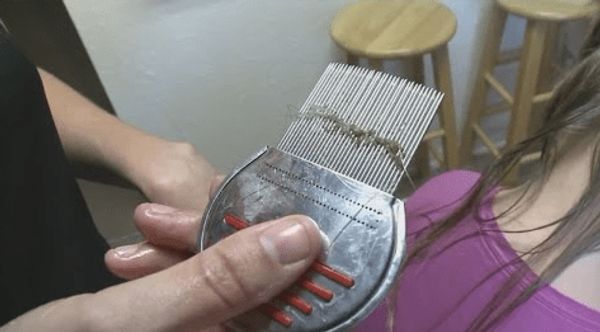
Isn’t it shocking what can be hiding in our hair? This story is about a hairdresser who came across a concerning problem while servicing a young girl. As soon as the comb touched her hair, the hairdresser was shocked to discover thousands of small insects crawling around. It turns out, the girl had lice.
The hairdresser immediately called the girl’s mother to inform her of the situation. Surprisingly, the mother was aware of the issue but didn’t consider it a big deal. This story highlights the lack of awareness and understanding when it comes to lice infestations, particularly in young children.
Lice infestations are not uncommon among school-age children and can lead to discomfort and itching. Here’s some important information to help you understand lice and what you can do about them:
What Are Lice?
Lice are tiny, wingless insects that infest the scalp and feed on human blood. They can cause itching and discomfort.
How are Lice Spread?
Lice are easily spread through close personal contact, sharing personal items like combs, brushes, and hats, or contact with infested clothing or furniture.
Signs and Symptoms:
- Itching: The most common symptom is intense itching on the scalp, neck, or behind the ears.
- Visible Lice and Nits: You may see adult lice or their eggs (nits) on the hair shafts. Nits are tiny and may be difficult to spot, often mistaken for dandruff.
- Skin Irritation: Scratching the itchy areas can lead to sores on the scalp, neck, and shoulders.
- Bite Marks: Lice bites can cause small red bumps, typically found around the waist, groin, upper thighs, and pubic area.

Personal Hygiene:
Practicing good personal hygiene, such as regular hair washing and avoiding the sharing of personal items, can help prevent lice infestations.
Treatment:
If lice are found, it’s crucial to seek treatment promptly. There are over-the-counter or prescription treatments available, including shampoos, creams, or lotions designed to kill lice and nits.
Combing and Removal:
Thoroughly combing the hair with a fine-toothed comb can help remove lice and nits. This should be done after applying a treatment.
Cleaning and Disinfecting:
Wash and dry infested clothing, bedding, and personal items in hot water and high heat to kill lice and nits.
Education and Awareness:
It’s important to educate children and parents about the signs of lice and the importance of early treatment to prevent further infestations.

In summary, lice infestations can happen, especially among school-age children. It’s important for parents and caregivers to be vigilant, regularly check for signs of lice, and take prompt action if an infestation is detected. By raising awareness and following proper treatment, we can effectively address this issue and keep our loved ones lice-free.





